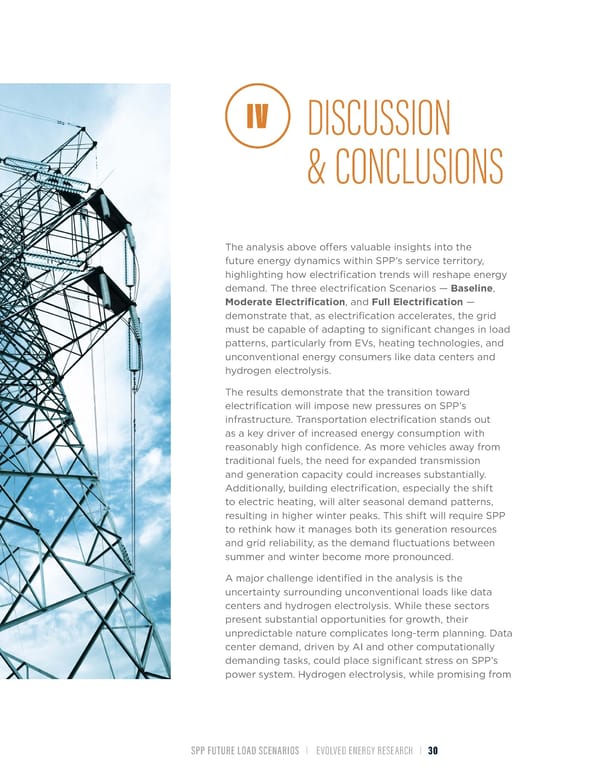IV DISCUSSION & CONCLUSIONS The analysis above offers valuable insights into the future energy dynamics within SPP’s service territory, highlighting how electrification trends will reshape energy demand. The three electrification Scenarios — Baseline, Moderate Electrification, and Full Electrification — demonstrate that, as electrification accelerates, the grid must be capable of adapting to significant changes in load patterns, particularly from EVs, heating technologies, and unconventional energy consumers like data centers and hydrogen electrolysis. The results demonstrate that the transition toward electrification will impose new pressures on SPP’s infrastructure. Transportation electrification stands out as a key driver of increased energy consumption with reasonably high confidence. As more vehicles away from traditional fuels, the need for expanded transmission and generation capacity could increases substantially. Additionally, building electrification, especially the shift to electric heating, will alter seasonal demand patterns, resulting in higher winter peaks. This shift will require SPP to rethink how it manages both its generation resources and grid reliability, as the demand fluctuations between summer and winter become more pronounced. A major challenge identified in the analysis is the uncertainty surrounding unconventional loads like data centers and hydrogen electrolysis. While these sectors present substantial opportunities for growth, their unpredictable nature complicates long-term planning. Data center demand, driven by AI and other computationally demanding tasks, could place significant stress on SPP’s power system. Hydrogen electrolysis, while promising from SPP FUTURE LOAD SCENARIOS | EVOLVED ENERGY RESEARCH | 30
 Future Load Scenarios for Southwest Power Pool Page 31 Page 33
Future Load Scenarios for Southwest Power Pool Page 31 Page 33